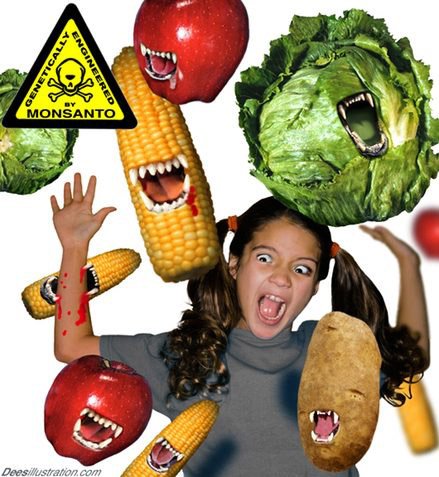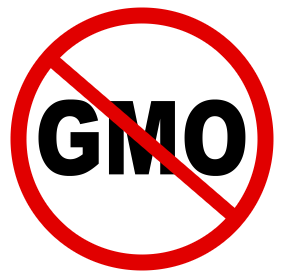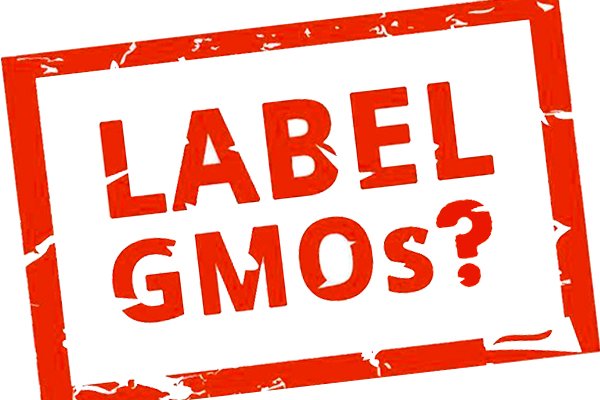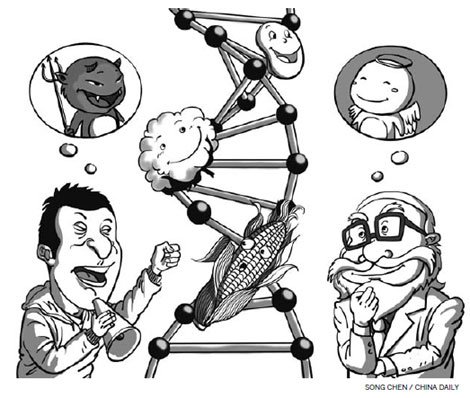Genetically Modified Foods
Genetic modification may well be the greatest health and environmental threat humanity has ever faced.
Since genetically modified or engineered foods (GM, GE, GMOs) are pervasive in our food supply, it is wise to ask, what are they? Are they essentially the same as non-GM foods? And since humanity faces a global economic and food-supply crisis, do genetically modified crops live up to claims of safety, productivity, and profitability?

Natural, or traditional, breeding processes allow modifications within a species. A horse, for example, bred with a donkey, makes a mule. In genetic modification, though, a gene with desired characteristics from a different species (i.e., a transgene) is physically inserted into the genetic sequence of plant or animal DNA. Perhaps the best-known example is that of specific genetic material from a soil bacterium Bacillus thuringiensis (Bt) inserted into corn or cotton, resulting in Bt corn or Bt cotton, each of which manufactures its own pesticide.

Unfortunately, after GM insertion, up to 5% of other genes in the same DNA genetic sequence mutate in ways that can’t be predicted, prevented, controlled, or reversed. In appearance and flavor, GM foods may resemble non-GM equivalents, but scientists and watchdog organizations worldwide report GM’s harmful effects on human and animal health and reproduction. They fear side effects such as new toxins, new diseases, and health-compromising digestive problems.
Studies reveal higher death rates, organ damage, reproductive failures, sterility, damaged immune systems, abnormal cell growth in digestive tracts, lower infant birth weight, and higher infant mortality in animals fed GM crops. Farmers report thousands of sick, sterile, and dead livestock.
Toxic and allergic properties of GM foods have been widely documented. In one experiment, rats refused to eat a GM tomato; some of the force-fed rats developed stomach lesions or died within 2 weeks. The tomato was approved for market.
Bt toxin survived digestion in mice and caused damage to the small intestines. GM-impaired digestion may increase allergies or digestive maladies. GM peas producing life-threatening inflammatory responses weren’t marketed only because a mice study happened to be used for the first time. Soy allergies in the UK increased 50% soon after GM soy was introduced. Rats, similar to humans in reactivity, developed problems similar to humans’ multiple chemical sensitivity.
In one UK study done in 1995 by highly respected gene researcher Dr. Arpad Pusztai, rats fed GM potatoes had marked changes in their development. The most alarming was offspring with smaller livers and heart sizes, weaker immune systems, and, worst of all, smaller brain sizes. Pusztai reported some of these findings in a TV interview (omitting the findings about smaller brains, for fear of panicking the public), and said, “I find it very, very unfair to use our fellow citizens as guinea pigs.”
Despite initial commendation, he was shortly fired from his job at the government-supported lab, his research confiscated and discredited, his team dispersed, and a gag order imposed on him. Protests from the international scientific community were unavailing.i

One scientist serving on an international Independent Science Panel on GM plants in 2003, stated, “The [GM] process is not at all precise. It is uncontrollable and unreliable, and typically ends up damaging and scrambling the host genome, with entirely unpredictable consequences.”ii At least two studies of rats fed GM potatoes revealed an unusual increase in cell growth in the small and large intestines. Several scientists have said the situation may lead to cancer.iii
Additionally, in one small human study, researchers found GM soy transgenes released during digestion had transferred from the food into human gut bacteria and continued to function there, with unknown consequences. One of many concerns is that because many GM crops are engineered to be antibiotic resistant (as an identifying tag in the development process), it is feared the antibiotic resistance will be transferred to the human or animal. In fact, antibiotic-resistant infections are reportedly on the rise in children, the most vulnerable group.iv

Consider, too, the supplement L-tryptophan imported back in the 1980s. Of six brands, one was GM. About 100 Americans died and thousands were sickened or disabled after ingesting it. If symptoms hadn’t been new, unique, and acute—arising so quickly that medical help was sought—the connection to GM L-tryptophan might never have been made. However, if symptoms develop more slowly or with less unique symptoms, how can the cause be reliably determined?
What if human symptoms are related to something the animal ate—like GM corn? No pre-market release safety studies were done on the effects of consuming GM-fed animals, yet independent studies indicate some GM DNA appears in meat, eggs, and dairy.
Fears for the Future

Independent observers report that years of GMO results indicate no overall increased yields but, instead, increased pesticide use, harmful effects on wildlife from honeybees to aquatic creatures to mammals, herbicide-resistant superweeds and pesticide-resistant bugs, a suicide epidemic in India as GM cotton farmers face financial ruin, and animals and humans falling ill or dying after GM exposure. Genetic modification may well be the greatest health and environmental threat humanity has ever faced.
Hi! I am a robot. I just upvoted you! I found similar content that readers might be interested in:
http://amazingdiscoveries.org/H-deception-health_genetically_modified_GM_corn